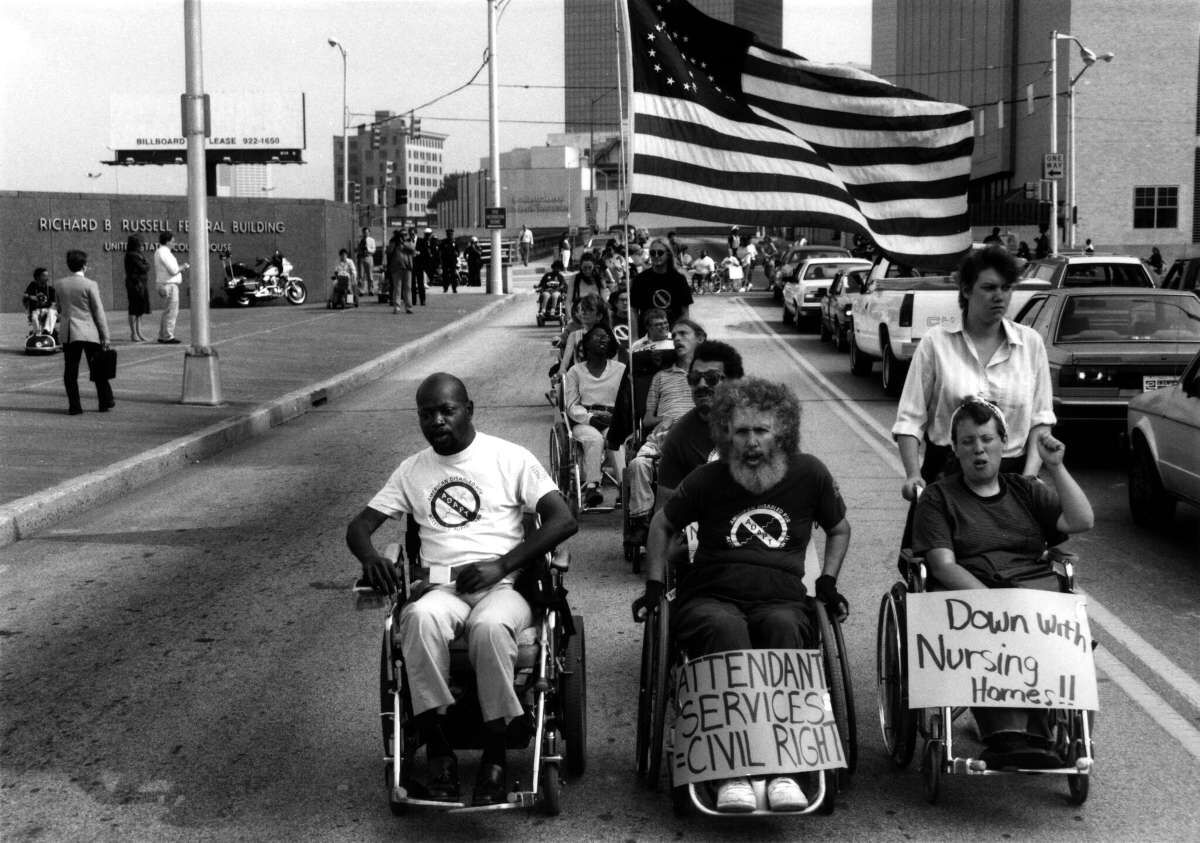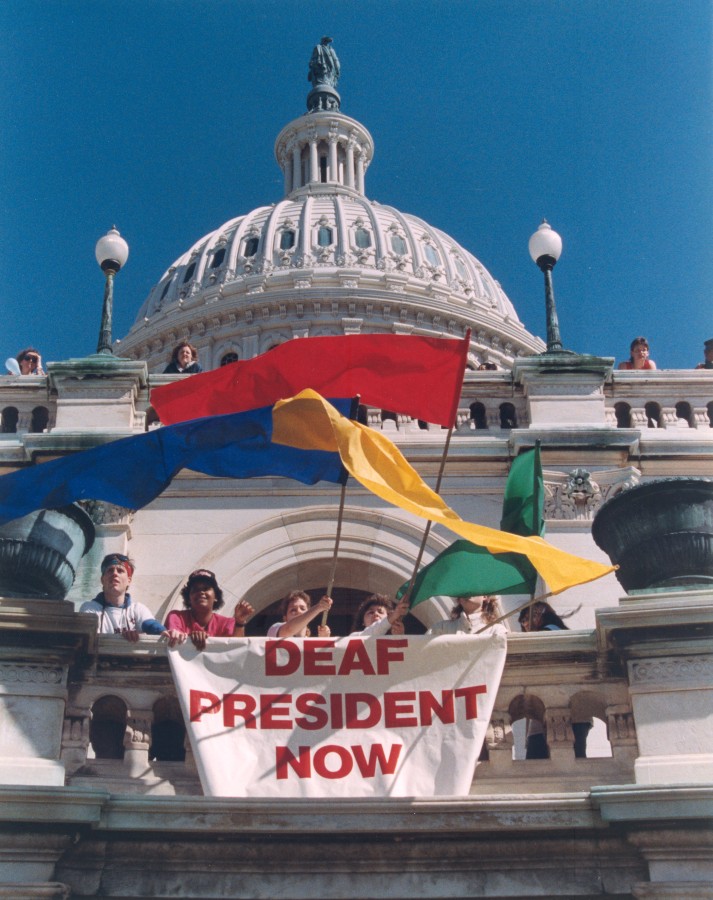“Dependency increases the costs of entitlements, lowers our gross national product, and reduces revenue to the Federal government. People with disabilities want to work... to be productive, self-supporting and tax paying participants in society.”
National Council on Disability. Toward Independence: An Assessment of Federal Laws and Programs Affecting Persons with Disabilities—With Legislative Recommendations. Washington, D.C.: National Council on Disability, February 1986. https://www.ncd.gov.

Disability Rights protesters holding an American flag and protesting with signs. Photograph. https://ability360.org.
